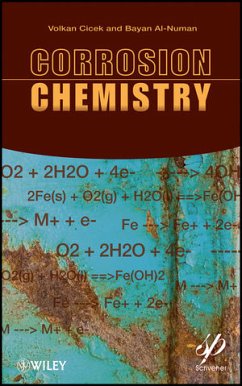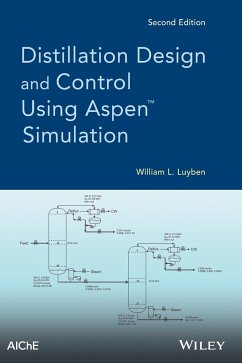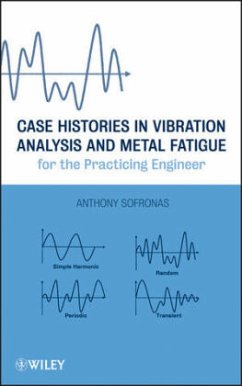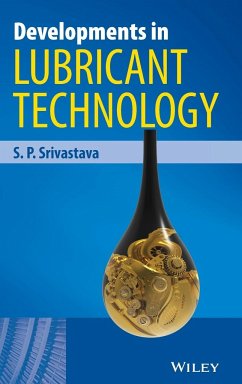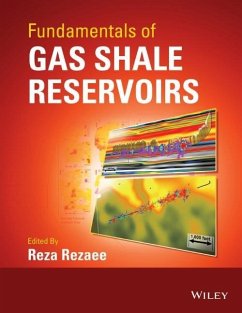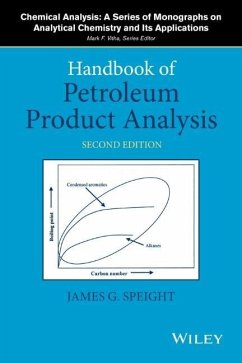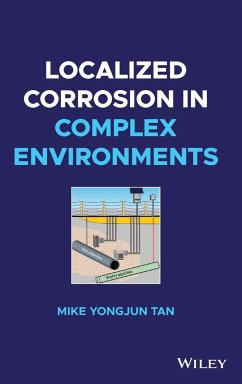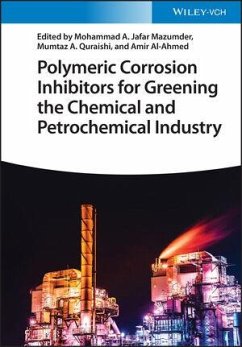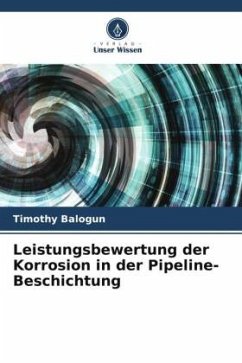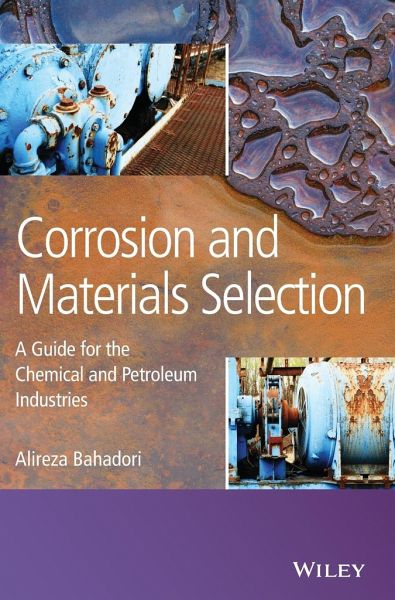
Corrosion and Materials Selection
Versandkostenfrei!
Versandfertig in über 4 Wochen
242,99 €
inkl. MwSt.
Weitere Ausgaben:

PAYBACK Punkte
121 °P sammeln!
The petroleum and chemical industries contain a wide variety of corrosive environments, many of whichare unique to these industries. Oil and gas production operations consume a tremendous amount of ironand steel pipe, tubing, pumps, valves, and sucker rods. Metallic corrosion is costly. However, the cost ofcorrosion is not just financial. Beyond the huge direct outlay of funds to repair or replace corroded structures are the indirect costs - natural resources, potential hazards, and lost opportunity. Wasting natural resources is a direct contradiction to the growing need for sustainable develo...
The petroleum and chemical industries contain a wide variety of corrosive environments, many of which
are unique to these industries. Oil and gas production operations consume a tremendous amount of iron
and steel pipe, tubing, pumps, valves, and sucker rods. Metallic corrosion is costly. However, the cost of
corrosion is not just financial. Beyond the huge direct outlay of funds to repair or replace corroded structures are the indirect costs - natural resources, potential hazards, and lost opportunity. Wasting natural resources is a direct contradiction to the growing need for sustainable development.
By selecting the correct material and applying proper corrosion protection methods, these costs can be
reduced, or even eliminated. This book provides a minimum design requirement for consideration when
designing systems in order to prevent or control corrosion damage safely and economically, and addresses:
- Corrosion problems in petroleum and chemical industries
- Requirements for corrosion control
- Chemical control of corrosive environments
- Corrosion inhibitors in refineries and petrochemical plants
- Materials selection and service life of materials
- Surface preparation, protection and maintainability
- Corrosion monitoring - plant inspection techniques and laboratory corrosion testing techniques
Intended for engineers and industry personnel working in the petroleum and chemical industries, this book is also a valuable resource for research and development teams, safety engineers, corrosion specialists and researchers in chemical engineering, engineering and materials science.
are unique to these industries. Oil and gas production operations consume a tremendous amount of iron
and steel pipe, tubing, pumps, valves, and sucker rods. Metallic corrosion is costly. However, the cost of
corrosion is not just financial. Beyond the huge direct outlay of funds to repair or replace corroded structures are the indirect costs - natural resources, potential hazards, and lost opportunity. Wasting natural resources is a direct contradiction to the growing need for sustainable development.
By selecting the correct material and applying proper corrosion protection methods, these costs can be
reduced, or even eliminated. This book provides a minimum design requirement for consideration when
designing systems in order to prevent or control corrosion damage safely and economically, and addresses:
- Corrosion problems in petroleum and chemical industries
- Requirements for corrosion control
- Chemical control of corrosive environments
- Corrosion inhibitors in refineries and petrochemical plants
- Materials selection and service life of materials
- Surface preparation, protection and maintainability
- Corrosion monitoring - plant inspection techniques and laboratory corrosion testing techniques
Intended for engineers and industry personnel working in the petroleum and chemical industries, this book is also a valuable resource for research and development teams, safety engineers, corrosion specialists and researchers in chemical engineering, engineering and materials science.




